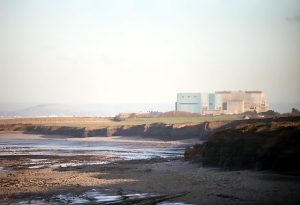David Kingman draws attention to some new information that the government has recently been forced to release about the decommissioning costs of the Hinkley Point C deal
Future generations could have to shoulder the costs of decommissioning the new nuclear reactor at Hinkley Point C, despite previous assurances that they would not, according to new documents that the government was recently forced to release under Freedom of Information.
Risk transfer
Hinkley Point C will be the first new nuclear reactor to be built in the UK since Sizewell B began operating in 1995. One of the big problems with nuclear energy is that both the radioactive waste which plants generate during their working lives, and eventually the plants themselves, have to be decommissioned in order to make them safe. This process is dangerous and expensive – a National Audit Office report last year valued the UK’s total nuclear decommissioning liabilities at almost £65 billion in present-day terms – and the UK’s strategy of storing the most dangerous waste underground in a Geological Disposal Facility (GDF) remains highly controversial as so few communities are willing to have one located on their doorstep.
Given these problems, the issue of dealing with the nuclear waste that will be produced by the new generation of nuclear power facilities which the government wants to see built in Britain has been a major cause for concern among anti-nuclear activists. Previously, the government has provided assurances that the cost of decommissioning waste has already been budgeted for as part of the deal to build Hinkley Point C, and that it will remain the responsibility of the private sector consortium (led by France’s EDF Energy and one of China’s state-owned enterprises). However, the newly released information referred to above – which was only made publicly available following repeated FOI requests – showed that this isn’t in fact the case.
Several weeks ago, the government released a document which it called a “Nuclear Waste Transfer Pricing Methodology Notification Paper”. This contained the following important passage:
“…unlimited exposure to risks relating to the costs of disposing of their waste in a GDF [Geological Disposal Facility], could not be accepted by the operator as they would prevent the operator from securing the finance necessary to undertake the project… [There will be a] cap on the liability of the operator of the nuclear power station which would apply in a worst-case scenario…The UK government accepts that, in setting a cap, the residual risk, of the very worst-case scenarios where actual cost might exceed the cap, is being borne by the government.”
Hidden costs
Very importantly, this document does not explain what the level of the cap actually is, so whether the government is adequately defending the interests of future generations of taxpayers is not open to scrutiny.
The government had previously released a different set of documents which included the official contracts underpinning the deal between the government and the EDF-led consortium. This included terms governing the decommissioning of the Hinkley Point C site, which is currently estimated to cost somewhere in the region of £5.9 to £7.2 billion over the time period between 2083 and 2138.
How this estimate relates to the cost at which the consortium’s liabilities have been capped is unclear. However, what it does emphasise is the long-term nature of these liabilities, which in the past have proven extremely difficult to forecast; the Nuclear Decommissioning Authority’s latest annual report revealed that the current estimate of Britain’s existing nuclear decommissioning liabilities has doubled in the past decade,and, as mentioned above, the problems with building a GDF mean there is no certainty over how the most dangerous waste will actually be disposed of.
It could be argued that these liabilities extend so far into the future that it would be unrealistic for a private company – very few of which have ever survived for over 100 years – to hold them on its balance-sheet. However, if that is the case then it also emphasises that the cost and uncertainty of decommissioning were another good reason for not going down the new nuclear energy route to begin with.
